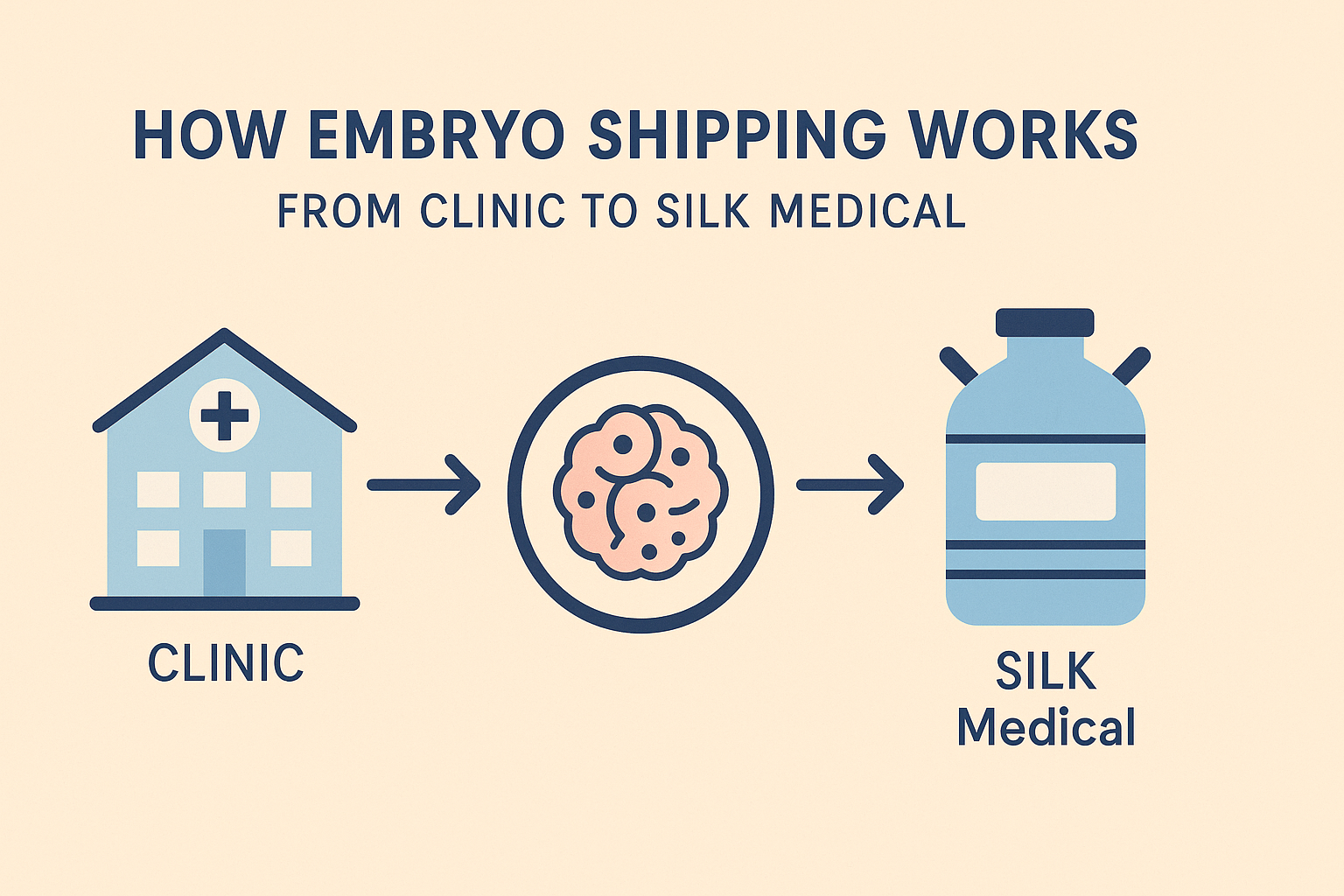For many patients pursuing IVF or surrogacy abroad, shipping embryos from a home country to the treating clinic is a necessary step. At SILK Medical in Tbilisi, Georgia, we work with patients from over 30 countries, including the U.S., Canada, Japan, China and across Europe. Embryo shipping is fully supported, but it comes with specific requirements. If done incorrectly, it can cause delays or legal complications.
This article explains what’s involved in the shipping process, what documents are required, and how to avoid common problems that could affect your program.
Programs That Accept Shipped Embryos
If you’ve already completed an IVF cycle elsewhere and are now exploring surrogacy, two programs at SILK Medical are designed for patients with existing embryos:
- Effective Program ($38,900): Includes one embryo transfer
- Classic Program ($41,000): Includes up to three transfers
Both programs include all surrogate-related care, legal support, and embryo storage. They do not include the original IVF procedures – those are expected to have taken place at your previous clinic.
Embryo Stage and Freezing Media Compatibility
SILK Medical can accepts embryos frozen on Day 3, 5, or 6. The most common transfers are performed with Day 5 or 6 blastocysts. Our lab supports both Cryotech and Kitazato freezing media. These are considered global standards and are widely used in the U.S., Japan, and Europe.
If your embryos were frozen using another medium, we’ll need the exact name and composition of the cryoprotectant to confirm compatibility. Our embryologists routinely adapt thawing protocols, but prior review is required.
Documentation Requirements and Why the Dates Matter
Every batch of shipped embryos must be accompanied by three official documents from the creating clinic:
- Embryo Creation Certificate
This must include the date of ICSI and list the names and passport details of the egg and sperm providers. That date must appear both at the top of the document and in the body of the text. - Embryo Culture Protocol
This document outlines how the embryos were developed and the culture medium used. - Freezing Certificate
The freezing date must be clearly indicated, and it must match what appears in the lab notes and any digital records. Passport data of the genetic parents must be included.
These documents must be signed by both the clinic director and the embryologist. They must also be notarized, apostilled, and translated into English. Inconsistencies between the actual embryo creation date and the date stated on the certificates are not accepted. For example, if embryos were created in May 2023, but the certificate is dated January 2024, this can lead to problems during the issuance of the child’s birth certificate.
Courier Options and How Transport Works
Most of our patients use third-party cryo couriers to transport their embryos to Georgia. Our recommended provider is ARK Cryo, but patients are free to choose others, provided they use a dry shipper and comply with international transport regulations for biological material.
The process generally includes:
- Preparation of the dry shipper with liquid nitrogen
- Collection from the originating clinic
- Customs clearance
- Hand delivery to SILK Medical’s embryology lab in Tbilisi
Average shipping costs range from $3,000 to $4,000, depending on distance and urgency.
For a broader understanding of the general process and regulations around embryo transport, you can refer to the ASRM’s guidelines on cryopreservation and transport.
Preparing Your Local Clinic
Patients should inform their home clinic about the intended shipment well in advance. That clinic must:
- Prepare the required certificates with correct historical dates (not the date of document issuance)
- Coordinate with the courier for handover
- Sign an official release form allowing the embryos to be shipped
Clinics unfamiliar with international embryo export may be reluctant to prepare documents in the required format. We can assist by providing templates or sample documents upon request.
What Happens When Embryos Arrive at SILK Medical
Once the embryos arrive, SILK Medical’s lab uses the IVFID Witness System to verify sample identity and prevent mix-ups. This system electronically tags each cryotop and matches it to the intended patient.
Our embryologists examine the condition of the embryos and the freezing media. If necessary, thawing protocols are adjusted based on the originating clinic’s methods. Embryos are stored in our facility for up to one year – included in the cost of surrogacy programs that use shipped embryos.
Start Early. Ask Questions. Avoid Delays.
Shipping embryos internationally is absolutely doable – we’ve supported hundreds of patients through this exact process. But getting it right means planning ahead, coordinating with your clinic, and preparing the right paperwork with the right dates.
If you’re considering surrogacy or IVF at SILK Medical with your existing embryos, contact our team early. We can review your documents in advance and confirm compatibility before you commit to shipping.
You can learn more about our programs and contact our team directly here: connect@silkmedical.ge.


